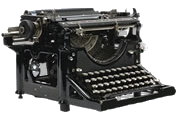Sight-Seeing at the Front (Vanity Fair, 1918)
Written during the closing weeks of the war, this Vanity Fair article was penned by a rather sly, witty scribe who was astounded to find that those areas closest to the front, yet just outside the entrances to the reserve trenches, were jam-packed with all manner of civilian tourist groups (ie. The American Woman’s Bouillon Cube Fund, The Overseas Committee of the New and Enlarged Encyclopedia, The National Mushroom Association of the United States); an exercise in creative writing? You tell us.
Sight-Seeing at the Front (Vanity Fair, 1918) Read More »
